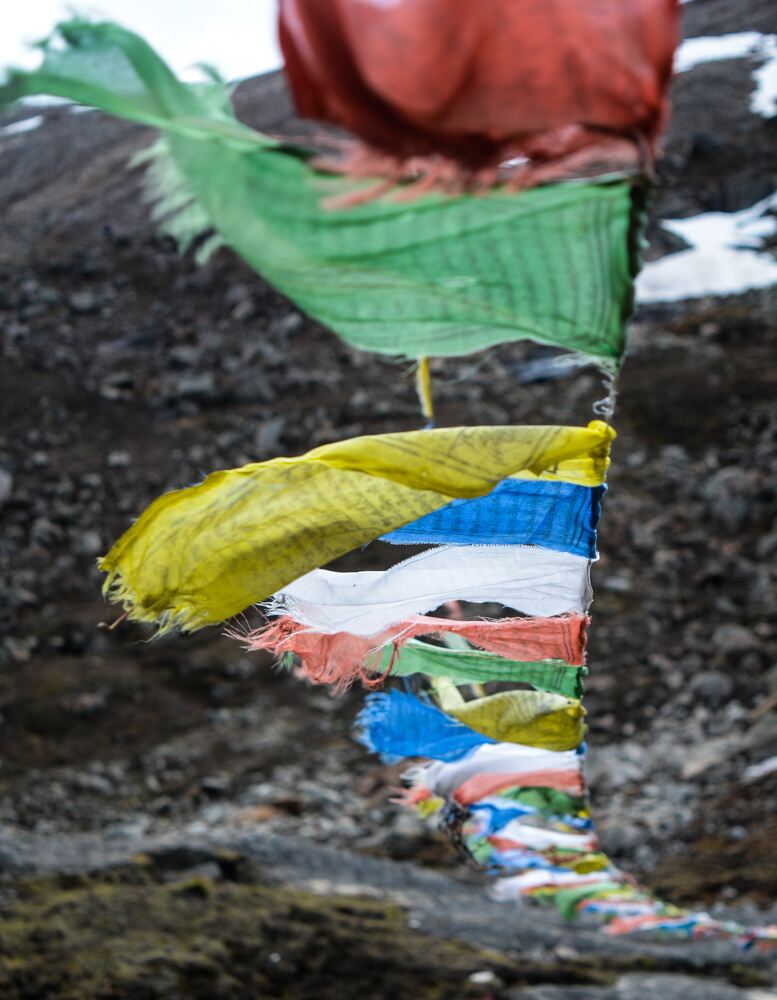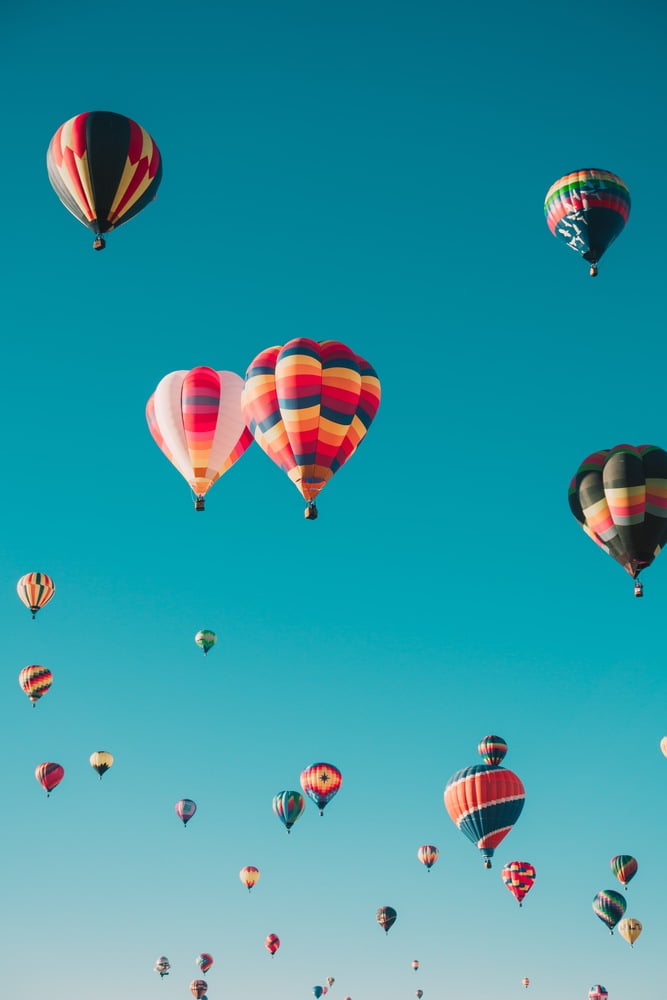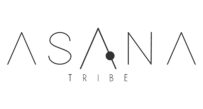In the sacred journey of life, forgiveness emerges as a profound cornerstone of healing and transformation. This theme invites us to delve deep into the intricate montage of our emotions, breath, and self-healing capacities.
Forgiveness, often seen as a path of both shadow and light, beckons us to release the burdens of past wounds and open the door to restorative rest.
As we navigate this landscape, we discover the breath as our faithful companion, guiding us toward self-compassion and liberation.
Join us on this exploration of forgiveness, where the breath becomes a healing force, and rest takes on new dimensions as we embrace the art of self-healing.
The Breath: Bridging Body, Mind, and Spirit
The breath is a fundamental and life-sustaining aspect of human existence. In the realms of yoga, meditation, and holistic well-being, the breath holds profound significance, often serving as a bridge between the physical body, the mind, and the spirit.
At its core, the breath is a simple exchange of oxygen and carbon dioxide, fuelling the body’s metabolic processes. Yet, it’s much more than a physiological function. It’s a powerful tool for self-regulation and transformation.
The Role of Breath in Yoga and Meditation
In yoga, the breath is referred to as “prana,” which means life force or vital energy. The practice of pranayama, the conscious control of breath, is an integral component of yoga. It involves various techniques that enable individuals to expand their awareness of breath, regulate it for different purposes, and connect with the present moment.
The breath also plays a crucial role in meditation. Focusing on the breath provides a point of concentration, anchoring the mind and preventing it from wandering. Mindful breathing cultivates presence, helping individuals become more attuned to their inner experiences and external surroundings.
The Emotional and Mental Significance of Breath
The breath is a reflection of one’s emotional and mental states. Shallow, rapid breathing often accompanies stress and anxiety, while slow, deep breaths are associated with relaxation and calm. Thus, by consciously modifying the breath, individuals can influence their emotional and mental well-being.
In summary, the breath is a multifaceted and profound aspect of human existence. It sustains life, bridges the physical and spiritual realms, and serves as a tool for self-regulation, mindfulness, and emotional well-being in practices like yoga and meditation.
Cultivating a Conscious Relationship with the Breath
Cultivating a conscious and mindful relationship with the breath can lead to greater self-awareness, balance, and overall well-being.
The quality of your breath is the quality of your life.. it’s as simple as that. But you have to walk the steps yourself from darkness to light. To your breath, you have to live in the world but you have to know that you’re not of the world.
Gurmukh Kaur Khalsa, Architecture Of Peace: On Yoga
These words by Gurmukh Kaur Khalsa beautifully emphasise the profound connection between the quality of our breath and the quality of our life.
They also underscore the idea that the path to transformation and self-awareness involves moving from darkness to light, and understanding that while we live in the world, our true essence transcends it.
This concept resonates deeply with the practice of yoga, breath-work, and self-healing, where our breath becomes a bridge to inner peace and inner knowing. It reminds us that by mindfully tending to our breath and inner world, we can navigate the external world more gracefully.
Balancing the Head and the Heart: The Inner Conflict

Being stuck between the head and the heart can create a state of inner conflict and confusion, affecting mental, emotional, and intuitive aspects of one’s life. Here’s how this dilemma manifests in these dimensions
1. Mental Stagnation:
When you’re caught between the head and the heart, decision-making becomes challenging. The mind may analyse choices logically, while the heart follows emotional inclinations. This can lead to mental stagnation as you weigh pros and cons without reaching a resolution. Overthinking and indecision can result.
2. Emotional Turmoil:
Emotional conflicts arise when the heart wants one thing, but the mind suggests another. This can lead to feelings of inner turmoil, anxiety, and frustration. Emotions may vacillate between enthusiasm and doubt, joy and sorrow, as you grapple with conflicting desires and feelings.
3. Intuitive Disconnection:
The intuition often resides in the deeper layers of consciousness, closer to the heart. When stuck in the head, you may disconnect from your intuitive guidance. This can lead to a lack of clarity, as your intuitive wisdom is drowned out by the noise of overthinking.
4. Physical Symptoms:
Prolonged inner conflict between the head and the heart can manifest physically, leading to stress-related symptoms such as headaches, tension in the body, and even compromised immune function.
To navigate this inner divide, it’s important to practice self-awareness and balance:
- Mindfulness: Cultivate mindfulness to become aware of your thoughts, emotions, and bodily sensations. This awareness can help you recognise when you’re stuck in your head and not aligned with your heart’s desires.
- Emotional Intelligence: Develop emotional intelligence by acknowledging and processing your feelings. Understanding your emotions can help you make decisions that honour both your rational and emotional aspects.
- Intuition: Reconnect with your intuition through practices like meditation, deep reflection, and spending time in nature. Tuning into your intuition can provide valuable insights that bridge the gap between the head and the heart.
- Integration: Seek ways to integrate your logical thinking with your emotional and intuitive wisdom. Explore approaches like journaling, therapy, or talking with a trusted friend to gain perspective and find resolutions.
Ultimately, finding balance between the head and the heart is an ongoing process of self-discovery and growth. It’s about learning to honour both aspects of yourself and allowing them to work together harmoniously in decision-making and life choices.
What Breath Can Tell Us

The breath can serve as a powerful indicator of our internal state and can offer clues about whether something feels right or wrong. Here’s how the breath can provide insights:
1. Steady and Calm Breath (Rightness):
When something feels right or aligned with your true self, your breath tends to remain steady and calm. Your inhales and exhales are even, and there’s a sense of ease in your breathing. You may not even notice your breath because it flows naturally and effortlessly.
2. Shallow or Irregular Breath (Wrongness):
Conversely, when something doesn’t feel right or creates inner conflict, your breath can become shallow, irregular, or even held. This can manifest as quick, shallow breaths, breath-holding, or uneven patterns. It’s as if your body is signalling discomfort or stress through your breath.
3. Body Sensations:
Pay attention to how your body responds to a situation or decision. If you notice tension, tightness, or discomfort in your chest, throat, or abdomen, it could be an indication that something feels wrong or out of alignment. These physical sensations often coincide with disrupted breathing patterns.
4. Intuitive Clues:
Sometimes, your intuition communicates through subtle bodily cues, including changes in your breath. You might have a gut feeling that something is right or wrong, and this can be accompanied by changes in your breath, such as a sudden deep breath of relief when you make a correct decision.
5. Breath Awareness:
Practicing breath awareness meditation or mindful breathing can help you tune into these subtle signals more effectively. By regularly observing your breath, you become more attuned to how it responds to different situations, which enhances your ability to discern rightness or wrongness.
It’s essential to note that these cues from the breath are highly individual and subjective. What feels right or wrong to one person may not be the same for another.
Therefore, developing a deep connection with your breath and learning to trust your own bodily sensations and intuition is key to using your breath as a guide in decision-making and life choices.
The Breath as an Anchor in Life

The breath can serve as a powerful anchor in various aspects of life, including meditation, yoga, and decision-making.
Here’s how the breath acts as an anchor:
Meditation:
In mindfulness and meditation practices, the breath is often used as a focal point. By concentrating on the natural rhythm of your breath, you can anchor your awareness to the present moment, letting go of distracting thoughts and worries. This focused attention on the breath helps cultivate mindfulness, inner calm, and clarity.
Yoga:
Breath is integral to yoga practice. It serves as the link between body and mind, helping you move through yoga postures with intention and awareness. Each movement is synchronised with the breath, creating a flow that deepens your practice and enhances your mind-body connection.
Stress Reduction:
When faced with stress or challenging situations, consciously slowing down and deepening your breath can act as a calming anchor. It helps activate the body’s relaxation response, reducing stress hormones and promoting a sense of calm and clarity.
Decision-Making:
As previously discussed, the breath can provide valuable feedback when making decisions. By paying attention to how your breath responds in a given situation, you can gain insights into your intuition and internal guidance system.
Emotional Regulation:
The breath is closely connected to emotions. Learning to regulate your breath can help you manage and navigate intense emotions. For example, taking slow, deep breaths can help calm anxiety or anger, while consciously breathing into certain areas of tension can release emotional blockages.
Physical Wellbeing:
Deep and mindful breathing supports overall physical health. It ensures that your body receives an adequate supply of oxygen, aids in digestion, and promotes relaxation, which can contribute to better sleep and improved immune function.
Spiritual Practices:
Many spiritual traditions incorporate breath as a fundamental aspect of their practices. Breath is seen as a bridge between the physical and spiritual realms, helping practitioners connect with their higher selves or a greater sense of purpose.
In all these contexts, the breath acts as a reliable anchor that keeps you rooted in the present moment, fosters self-awareness, and can guide you toward balance and well-being.
Breath-Work Practices: A Path to Healing and Self-Discovery

The most popular breath-work exercises:
Diaphragmatic Breathing (Deep Belly Breathing):
Diaphragmatic breathing involves inhaling deeply into the diaphragm, allowing the abdomen to expand on the inhale and contract on the exhale. It engages the diaphragm muscle fully and promotes relaxation by activating the body’s relaxation response.
Box Breathing (Square Breathing):
Box breathing is a structured technique that typically involves inhaling for a count of four, holding the breath for a count of four, exhaling for a count of four, and holding the breath again for a count of four. It helps regulate the breath, reduce stress, and improve focus.
Alternate Nostril Breathing (Nadi Shodhana):
Nadi Shodhana is a yogic practice where you use your fingers to alternately close off one nostril and then the other while breathing. It is believed to balance the body’s energy channels (nadis) and promote mental clarity and balance.
4-7-8 Breathing:
In the 4-7-8 technique, you inhale through the nose for a count of four, hold the breath for a count of seven, and exhale through the mouth for a count of eight. It is a calming practice that can help with anxiety and promote relaxation.
Wim Hof Method:
The Wim Hof Method combines specific breathing patterns with cold exposure and meditation. It involves controlled, deep breaths followed by breath retention. This method is known for its potential to improve energy, focus, and the ability to tolerate cold temperatures.
Holotropic Breathwork:
Developed by Dr. Stanislav Grof, Holotropic Breath-work uses rapid, deep breathing to induce altered states of consciousness. Participants lie down and engage in intense breath-work sessions, often accompanied by evocative music. It is used for self-discovery and therapeutic purposes.
Kapalbhati:
Kapalbhati, a yogic technique, involves forceful exhalations through the nose while keeping the inhalation passive. It is believed to cleanse the respiratory system, increase lung capacity, and improve vitality.
Ujjayi Breath:
Commonly used in yoga, Ujjayi breath is characterised by a soft hissing or ocean-like sound created by constricting the throat during both inhalation and exhalation. It enhances concentration and mindfulness during yoga practice.
Breath of Fire (Kundalini Yoga):
Breath of Fire is a rapid, rhythmic breath practiced in Kundalini Yoga. It involves forceful exhalations through the nose while the diaphragm rapidly pumps in and out. It is used to increase energy, mental clarity, and focus.
Buteyko Breathing:
The Buteyko method aims to reduce over-breathing and increase carbon dioxide levels in the body. It involves slow, shallow breaths through the nose and is used to improve respiratory health and reduce anxiety.
Pranayama:
Pranayama is a term encompassing various yogic breath-work techniques. Each technique serves specific purposes, such as Bhramari (humming bee breath), Anulom Vilom (alternate nostril breathing), and others, promoting relaxation, energy balance, and mental clarity.
These breath-work exercises can have a wide range of physical, mental, and emotional benefits. It’s essential to learn and practice them mindfully, following proper guidance when necessary, to experience their full potential. The choice of which technique to use often depends on your goals and specific needs.
The Profound Connection Between Our Physical and Emotional Experiences

We do not always allow ourselves to work through pain. More often than not, we think pain is a signal that we must stop, rather than find its source. Our souls do not like stagnation. Our souls aspire toward growth, that is, toward remembering all that we have forgotten due to our trip to this place, the earth. In this context, a body in pain is a soul in longing.
Malidoma Patrice Somé, Ritual: Power, Healing and Community
This quote beautifully emphasises the profound connection between our physical and emotional experiences. Pain, often seen as an obstacle or something to avoid, can indeed be a messenger from our deeper selves, urging us to pay attention, explore, and heal. It reminds us that our bodies and souls are not separate entities but interconnected aspects of our being.
Pain can be a call for understanding, growth, and healing. Instead of trying to escape or suppress it, this perspective encourages us to listen to what our pain is telling us. By delving into the source of our pain, whether physical or emotional, we can discover valuable insights about ourselves and our life’s journey. It’s an invitation to reconnect with our inner wisdom, remember our true essence, and embark on a path of self-discovery and transformation.
This quote invites us to embrace pain as an integral part of our human experience, recognising that it can serve as a catalyst for profound healing and growth on both physical and spiritual levels.
The Unfolding Petals of Healing
Healing can be seen as a continuous process of stitching ourselves back together, much like a flower’s petals gradually unfolding and blooming. At the heart of this metaphor lies the idea that each step in our healing journey allows us to love ourselves more and more.
Just as a flower’s petals gradually open to reveal its inner beauty, healing unfolds layers within ourselves. With each layer of healing, we gain a deeper understanding of our true selves, and our capacity for self-love and self-acceptance grows. It’s a process of embracing our vulnerabilities, scars, and imperfections as integral parts of who we are.
Healing is not about becoming someone else but about reconnecting with our authentic selves. It’s a journey of self-discovery, self-compassion, and self-acceptance. Each step we take, each layer we unravel, is an opportunity to love ourselves more deeply and authentically.
Just as a flower’s beauty is revealed in its blooming, our true essence shines through as we heal and grow. It’s a beautiful and transformative journey of self-love and self-empowerment.
The Breath in the Healing Journey

The breath plays a profound role in the healing journey. It serves as a bridge between the physical body and the inner realms of the mind, emotions, and spirit. Here’s how the breath functions in the healing process:
- Awareness and Presence: The breath serves as an anchor to the present moment. When we consciously focus on our breath, we become fully present in our bodies and the current experience. This presence is a crucial foundation for healing because it allows us to observe our thoughts, emotions, and bodily sensations without judgment.
- Stress Reduction: Deep, mindful breathing activates the body’s relaxation response. It reduces the production of stress hormones, such as cortisol, and promotes the release of calming neurotransmitters like serotonin. This can help alleviate the physical and emotional symptoms of stress, anxiety, and trauma, creating a conducive environment for healing.
- Emotional Release: The breath is a channel for emotional release. As we breathe deeply and mindfully, we create space for suppressed emotions to surface and be processed. Breathwork practices can help individuals access and release stored emotional pain, trauma, and grief.
Energy Flow:
In many spiritual and healing traditions, the breath is seen as the carrier of life force energy (often called prana, chi, or qi). When the breath flows freely, it nourishes every cell and system in the body, promoting physical and energetic balance. Breathwork and yoga practices aim to remove blockages and enhance the flow of this vital energy.
- Body-Mind Connection: The breath bridges the gap between the body and the mind. By observing the breath, we can gain insights into our mental and emotional states. Irregular or shallow breathing patterns can signal stress or unease, while deep, rhythmic breathing can indicate relaxation and a state of ease.
- Self-Regulation: Breath-work techniques offer tools for self-regulation. They can be used to shift from states of agitation to calm, from anxiety to relaxation, and from scattered thoughts to focused attention. This self-regulation empowers individuals to navigate their healing process with greater agency.
- Intention and Visualisation: The breath can be paired with intention and visualisation practices. By setting healing intentions and using the breath to carry those intentions throughout the body, individuals can amplify their capacity for self-healing.

The breath is a vital ally in the healing journey. Its role goes beyond the physical act of respiration; it connects us to the deeper layers of our being and provides a pathway to self-awareness, relaxation, emotional release, and the cultivation of healing energy.
Through conscious and mindful breathing practices, we can support and enhance our healing process.
A Yoga Sequence for Healing and Self-Care
Here’s a yoga sequence that connects with the theme of using the breath and body awareness for healing:
1. Centering (2 minutes):
Begin in a comfortable seated position. Close your eyes and take a few deep breaths, centering your focus on the breath. Inhale to lengthen the spine, and exhale to release tension. Set an intention for healing and self-care.
2. Cat-Cow Pose (2 minutes):
Move to a tabletop position. Inhale, arch your back, and lift your head (Cow Pose). Exhale, round your back, and tuck your chin (Cat Pose). Flow between these poses with your breath for a couple of minutes, focusing on the mobility of your spine.
3. Child’s Pose (2 minutes):
Sink back into Child’s Pose, extending your arms forward and resting your forehead on the mat. Take deep breaths into your lower back and hips. Visualise any tension melting away with each exhale.
4. Downward Dog (2 minutes):
Transition to Downward-Facing Dog. Pedal your feet and take deep breaths, pressing through your palms and stretching your spine. Allow your head and neck to relax.
5. Sun Salutation (3 minutes):
Flow through a gentle Sun Salutation, syncing each movement with your breath. Start with Mountain Pose, inhale to reach up, exhale to fold forward, inhale to a halfway lift, exhale to fold, and inhale to rise back up. Repeat a few times.
6. Warrior Poses (4 minutes):
Move into Warrior I, Warrior II, and Warrior III, holding each pose for a few breaths. Focus on grounding through your feet and lengthening through your spine. These poses symbolize strength and resilience.
7. Bridge Pose (2 minutes):
Lie on your back and bend your knees, placing your feet hip-width apart. Inhale to lift your hips into Bridge Pose. Exhale to lower down. Repeat a few times, engaging your core and opening your heart.
8. Supine Twist (2 minutes per side):
Gently twist your spine with Supine Twists. Lie on your back, bring your knees to your chest, and then drop them to one side while keeping your shoulders grounded. Breathe deeply and switch sides.
9. Savasana (5 minutes):
Finally, settle into Savasana (Corpse Pose). Completely relax your body, letting go of any remaining tension. Focus on your breath and imagine the breath bringing healing energy to any areas of discomfort or tension.
10. Closing (2 minutes):
Slowly awaken from Savasana, wiggling your fingers and toes. Bring your knees to your chest and roll to one side. Return to a seated position, closing with a few centering breaths and gratitude for your practice.
This yoga sequence combines breath awareness, gentle movement, and deep relaxation to promote healing and self-care. It’s suitable for all levels and can be modified to accommodate any specific needs or limitations.
Understanding the Difference Between Rest and Sleep
Sleep and rest are related concepts, but they have distinct differences:
Sleep:
Biological State: Sleep is a naturally occurring, essential biological state where the body and mind go through specific sleep cycles, including REM (rapid eye movement) and non-REM stages. During these cycles, various physiological processes occur, such as memory consolidation and physical restoration.
Unconscious State: Sleep is characterised by a state of unconsciousness. While asleep, individuals are generally unaware of their surroundings, and the brain undergoes various activities necessary for physical and mental recovery.
Duration: Sleep typically occurs in longer cycles and is essential for maintaining overall health. A full night’s sleep usually includes several sleep cycles, totaling around 7-9 hours for adults.
Rest:
Broad Concept: Rest is a broader concept that encompasses various activities and states where the body and mind relax and recuperate. It can occur during wakefulness or sleep.
Conscious State: Rest can be either conscious or unconscious. For example, lying down to read a book, taking a leisurely walk, or engaging in mindfulness meditation are conscious forms of rest where you are aware of your surroundings and actions.
Variable Duration: Rest can occur for short or extended periods. It’s not limited to the longer, structured sleep cycles seen in sleep.
Sleep is a specific biological state characterised by unconsciousness, distinct sleep cycles, and a longer duration. Rest, on the other hand, is a broader concept that includes various conscious or unconscious activities or states where the body and mind recuperate, and it can occur during both wakefulness and sleep.
Both sleep and rest are essential for overall well-being, but they serve different purposes and can complement each other.
Forgiveness: A Path to Self-Healing and Well-Being

Forgiveness is a profound and transformative theme in the realm of self-healing, yoga, and meditation. Here are some aspects to consider:
1. What Is Forgiveness?
Forgiveness is the act of releasing feelings of resentment, anger, or the desire for revenge toward someone who has harmed you. It’s not about condoning their actions but about freeing yourself from the burden of negative emotions.
2. Self-Forgiveness:
Often, the most challenging forgiveness is forgiving oneself. Many individuals carry guilt and self-blame for past actions or mistakes. Self-forgiveness is a crucial step in healing and self-compassion.
3. Emotional Healing:
Forgiveness is a powerful tool for emotional healing. When you forgive, you let go of the emotional baggage that can weigh you down. This can lead to reduced stress, anxiety, and improved mental well-being.
4. Physical Health:
Studies have shown that forgiveness can have positive effects on physical health. It’s linked to lower blood pressure, reduced symptoms of depression, and a stronger immune system.
5. Spiritual Growth:
Forgiveness often plays a significant role in spiritual growth. Many spiritual traditions emphasise forgiveness as a means to transcend suffering and find inner peace.
6. Yoga and Forgiveness:
In yoga philosophy, forgiveness aligns with the principles of ahimsa (non-harming) and satya (truthfulness). By forgiving, individuals embrace non-harming not only towards others but also towards themselves.
7. Meditation on Forgiveness:
Guided meditation practices on forgiveness often involve visualising the person you need to forgive, expressing your feelings, and ultimately releasing those feelings. This can be a deeply cathartic process.
8. Healing Rituals:
Forgiveness can be incorporated into healing rituals or ceremonies. This may involve writing a forgiveness letter (even if it’s not sent), burning it as a symbol of release, or creating a forgiveness altar.
9. The Journey of Forgiveness:
Forgiveness is a journey, not a destination. It may take time and multiple attempts to fully forgive. It’s a process of gradually letting go and finding peace.
10. Compassion:
Forgiveness is closely linked to compassion. By forgiving others, you extend compassion not only to them but also to yourself. It’s an act of kindness towards your own well-being.
11. Boundaries:
Forgiveness doesn’t mean allowing others to harm you repeatedly. It’s essential to establish healthy boundaries and, if necessary, distance yourself from toxic situations or individuals.
12. Teaching Forgiveness:
As a yoga and meditation teacher, you can guide your students through forgiveness practices. Create a safe space for them to explore forgiveness as a tool for healing and growth.
A gentle reminder that forgiveness is a personal journey, and there’s no right or wrong way to go about it. It’s about what feels authentic and healing for the individual.
Encourage self-compassion, patience, and self-acceptance as individuals navigate their own paths toward forgiveness.
Forgiveness and Self-Healing:
– Forgiveness is a powerful act of self-healing. When we forgive, we release the emotional burdens and grudges that can negatively impact our mental and emotional well-being.
– Self-healing involves addressing past wounds and traumas, both physical and emotional, and fostering a compassionate relationship with oneself.
Breath and Breath-work:
– Breath is a fundamental aspect of self-healing. It connects the body, mind, and emotions.
– Breath-work practices, such as pranayama in yoga, can help individuals release emotional blockages and promote mental clarity.
Rest and Sleep:
– Rest and sleep are essential components of self-healing. Sleep, in particular, is a crucial time for physical and mental recovery.
– Understanding the difference between rest and sleep highlights the importance of conscious rest and relaxation during wakefulness to rejuvenate the mind and body.
Shadow and Light Work: Exploring Forgiveness and Self-Healing
Shadow and Light work journal prompts related to the theme of forgiveness, self-healing, breath, and rest:
Shadow Work:
– What past wounds or grudges am I still holding onto?
– How have unforgiven experiences affected my mental and emotional well-being?
– What inner conflicts or self-limiting beliefs might be hindering my self-healing journey?
Light Work:
– What does forgiveness mean to me, and how can it empower my self-healing process?
– How can conscious breath-work practices support my emotional release and inner transformation?
– What restorative rituals or self-care practices can I incorporate into my daily life to promote rest and rejuvenation?
These journal prompts can help individuals explore their inner landscape, identify areas for growth, and cultivate self-compassion in their journey toward forgiveness, self-healing, and well-being.
The Power of Breath

As we conclude our journey through the realms of forgiveness, self-healing, the breath, and rest, we find ourselves woven into a richer, more compassionate tapestry of life.
Forgiveness is not a single act but a continuous, nurturing practice that leads to self-renewal. Our breath, that faithful ally, reminds us to be present in each moment, allowing us to heal with every inhale and exhale.
Rest, not as mere sleep but as intentional reprieve, becomes a sacred act of self-love.
In the symphony of these elements, we discover the power to mend our souls, one petal at a time, and to find profound peace in the embrace of our own breath and the sanctuary of rest.




